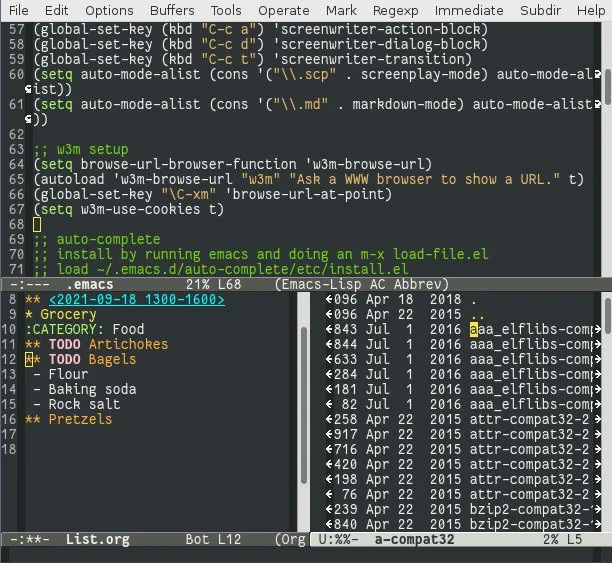

The width and height are specified in characters The geometry specification is in the standard X format see X(7)įor more information. geometry= geometry Set the Emacs window's width, height, and position as specified. Defaults to one pixel of padding on each side of the internal-border= pixels Set the window's internal border width to the number of pixels specifiedīy pixels. Defaults to one pixel on each side of the border-width= pixels Set the Emacs window's border width to the number of pixels color= mode Override color mode for character terminals mode defaults to xrm= resources Set additional X resources.

When you specify a font, be sure to put a space between the Widthx height are generally fixed width, as is the fontįixed. Furthermore, fonts whose name are of the form "m" or "c" in the eleventh field of the font name is aįixed width font. Under the X11 Release 4 font-naming conventions, any font with the value Note that Emacs will only accept fixed width fonts. Will find the various X fonts in the /usr/lib/X11/fontsĭirectory. font= font Set the Emacs window's font to that specified by font. reverse-video Display the Emacs window in reverse video. title= name Specify the title for the initial X window. This controls looking up X resources as well as the window name= name Specify the name which should be assigned to the initial Emacs The following options are Lisp-oriented (these options are version Display Emacs version information and exit. fg-daemon Like "-bg-daemon", but don't disconnect from the terminal. You can then use the emacsclient (see emacsclient(1))Ĭommand to connect to the server (with optional name). bg-daemon Start Emacs as a daemon, enabling the Emacs server and disconnecting from

This must be the first argument specified in the command line. terminal= file Use specified file as the terminal instead of using stdin/stdout. This is useful for debugging problems in the init

debug-init Enable Emacs Lisp debugger during the processing of the user initįile ~/.emacs. no-splash Do not display a splash screen during start-up. Q, -quick Similar to "-q -no-site-file -no-splash". no-site-lisp Do not add site-lisp directories to load-path. no-site-file Do not load the site-wide startup file. no-shared-memory Do not use shared memory. + line:column Go to the specified line and column. + number Go to the line specified by number (do not insert a space between find-file= file, -visit= file The same as specifying file directly as an argument. The following options are of general interest: Read-eval-print loop (Lisp-Interaction-Mode), automated psychotherapy
#EMACS MEANS IN LINUX WINDOWS#
Running subshells within Emacs windows (Shell), running a Lisp (RMail) and sending (Mail), outline editing (Outline), compiling (Compile), GNU Emacs's many special packages handle mail reading Sequence, and Help Function (CTRL-h f) describes a given Lisp function. Name matching a given pattern, Help Key (CTRL-h k) describes a given key Help Apropos (CTRL-h a) helps you find a command with a Starts an interactive tutorial to quickly teach beginners the fundamentals
#EMACS MEANS IN LINUX HOW TO#
Is updated only when someone volunteers to do so.Įmacs has an extensive interactive help facility, but theįacility assumes that you know how to manipulate Emacs windows andīuffers. Please look there for complete and up-to-date documentation. Which you can read using Info, either from Emacs or as a standalone program. The primary documentation of GNU Emacs is in the GNU Emacs Manual, Is easily extensible since its editing commands are written in Lisp. The userįunctionality of GNU Emacs encompasses everything other editors do, and it GNU Emacs is a version of Emacs, written by theĪuthor of the original (PDP-10) Emacs, Richard Stallman. Emacs - GNU project Emacs editor SYNOPSISĮmacs [ files.


 0 kommentar(er)
0 kommentar(er)
